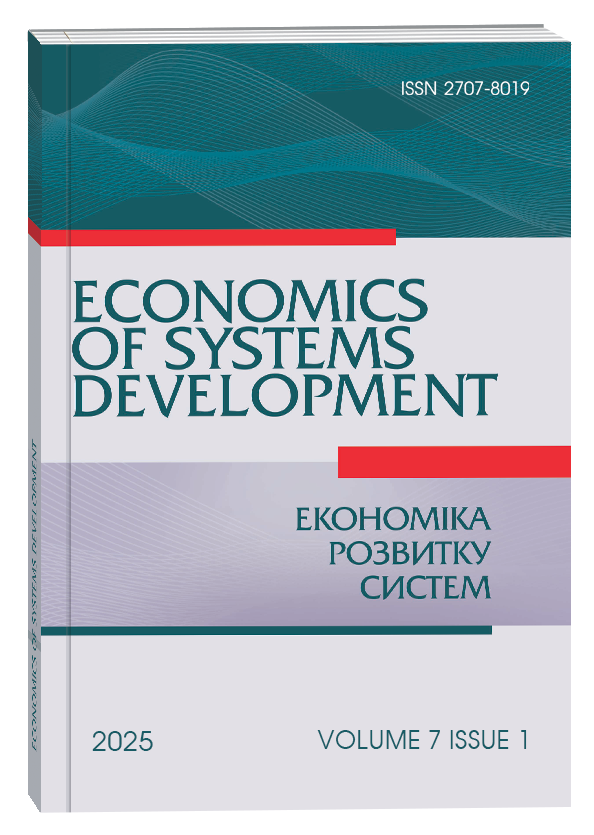IMPLEMENTATION OF TRANSPORT ACCESSIBILITY IN THE TOURISM SECTOR
Анотація
The prevailing trend in the development of tourism is to enhance the accessibility of tourist services for all segments of society. To this end, a range of measures must be implemented at both the state and local levels, as well as by the enterprises themselves. The present paper explores the merits and drawbacks of the various modes of transport utilised in the provision of tourist services. It is determined that in the future the transport offer in tourism will develop in the following directions: increasing the environmental friendliness of transport, ecological types of transport; accessibility of transport offer for people with disabilities; increased attention to travel safety; improvement of transport infrastructure. It is noted that the main barriers faced by tourists with disabilities are: inaccessibility of transport infrastructure facilities; low quality of service provided by support staff; insufficient awareness of service providers; lack of information about accessible facilities, services, relevant websites; lack of accessible rooms in hotels, restaurants and public places. This paper sets out the measures that local authorities and heads of transport infrastructure enterprises should take to improve accessibility. The measures to ensure the accessibility of various types of transport are disclosed, as are the best foreign experiences in the field of infrastructure accessibility for people with disabilities. It is established that the implementation of the concept of universal design will help solve the problems of service accessibility for clients with disabilities. In order to develop the transport infrastructure, in particular with regard to accessibility, it is necessary to implement the following measures: improve legislation on transport and its accessibility; involve people with disabilities in the development of legislation and policies in the field of barrier-free development; increase investment in the transport sector; professional training of specialists; improve transport infrastructure; introduce innovations; increase control over operators and the quality of services; disseminate information on websites; impose sanctions for breaches of accessibility legislation; inform service users of their rights and obligations.
Посилання
Barna N. V., Korotieieva A. V. (2020). Inkliuzyvno-reabilitatsiinyi turyzm. Posibnyk [Inclusive and rehabilitation tourism. Handbook]. Kyiv, 125 p. Available at: https://www.sgpinfo.org.ua/sites/default/files/pdf/inklyuzyvnyy_turyzm_.pdf (in Ukrainian)
Bezuhla L. S., Kuvaieva T. V., Herasymenko T. V. (2022). Problemy ta perspektyvy rozvytku inkliuzyvnoho turyzmu v Ukraini ta Yevropi [Problems and prospects for the development of inclusive tourism in Ukraine and Europe]. Ekonomika ta suspilstvo, no. 43. Available at: https://economyandsociety.in.ua/index.php/journal/article/view/1698/1633 (in Ukrainian)
Chupina K. O. (2020). Analiz rozvytku inkliuzyvnoho turyzmu zakordonom [ Analysis of the development of inclusive tourism abroad]. Visnyk KhNU imeni V.N. Karazina. Seriia “Mizhnarodni vidnosyny. Ekonomika. Krainoznavstvo. Turyzm”, no. 11, pp. 121-127. (in Ukrainian)
Dostupnist aeroportiv [Airport accessibility]. Available at: https://kbp.aero/wp-content/uploads/2024/04/Dostupnist-aeroportiv.pdf (in Ukrainian)
Ivanova O., Senkiv M. (2019). Dostupnyi turyzm dlia vsikh u Yevropeiskomu soiuzi [Accessible tourism for all in the European Union]. Visnyk Kyivskoho natsionalnoho universytetu imeni Tarasa Shevchenka. Heohrafiia, no. 1(74), pp. 66–74. (in Ukrainian)
Korzhylov L. I. (2020). Systema transportu v turyzmi. Kliuchovi elementy ta yikh problematyka [Transport system in tourism. Key elements and their problems]. Infrastruktura rynku, no. 43, pp. 15-18. Available at: http://www.market-infr.od.ua/journals/2020/43_2020_ukr/5.pdf (in Ukrainian)
Luzhanska T. Iu., Moroz F. V., Budkevych H. B, Kampo I. O. (2017). Rol transportnoho turyzmu v orhanizatsii podorozhei [The role of transport tourism in travel organization]. Naukovyi visnyk Mukachivskoho derzhavnoho universytetu. Zhurnal naukovykh prats, no. 23(18), pp. 315-329. (in Ukrainian)
Podolskyi Ye. (2023). U yakykh mistakh stvoreno vsi umovy dlia turystiv z invalidnistiu [Which cities have all the conditions for tourists with disabilities?]. Available at: https://dip.org.ua/kitaj/u-yakyh-mistah-stvoreno-vsi-umovy-dlya-turystiv-z-invalidnistyu/ (in Ukrainian)
Promoting accessible tourism for all. United Nations. Available at: https://social.desa.un.org/issues/disability/disability-issues/promoting-accessible-tourism-for-all
Recommendations for key players in the transportation sector. UN Tourism. Available at: https://www.unwto.org/accessibility
Sydoruk S. V., Matviichuk L. Iu., Lepkyi M. I. (2020). Prykladnyi kharakter osoblyvostei transportnoho perevezennia turystiv inkliuzyvnoho typu [Applied nature of the features of inclusive tourist transportation]. Review of transport economics and managment, no. 3(19), pp. 137-146. (in Ukrainian)
Vasylieva N. V., Prylipko S. M. (2020). Dostupnist infrastruktury hromadskoho transportu dlia malomobilnykh hrup naselennia: analiz zarubizhnoho dosvidu [Accessibility of public transport infrastructure for low-mobility population groups: analysis of foreign experience]. Derzhavne upravlinnia: udoskonalennia ta rozvytok, no. 11. DOI: https://doi.org/10.32702/2307-2156-2020.11.6 (in Ukrainian)


